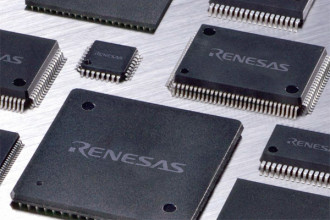 Abu Dhabi foundry company Global Foundries (GloFo) is seeking to make more partnerships in mainland China.
Abu Dhabi foundry company Global Foundries (GloFo) is seeking to make more partnerships in mainland China.
 Abu Dhabi foundry company Global Foundries (GloFo) is seeking to make more partnerships in mainland China.
Abu Dhabi foundry company Global Foundries (GloFo) is seeking to make more partnerships in mainland China.
 A survey has revealed that Britain’s small to medium enterprises (SMEs) still have worries about growing their businesses in 2015.
A survey has revealed that Britain’s small to medium enterprises (SMEs) still have worries about growing their businesses in 2015.
 For a while now AMD has been largely ignored by the makers of NAS x86 gear – who have tended to favour Intel or, more lately, ARM.
For a while now AMD has been largely ignored by the makers of NAS x86 gear – who have tended to favour Intel or, more lately, ARM.
QNAP has become the first vendor to bring an AMD-based x86 NAS to the market and was showing off its wares at CES over the weekend.
Dubbed the TVS-x63 lineup has four, six and eight bay models. Each of them has a four or eight GB of RAM. The 8-bay model also comes with a ‘+’ SKU and a 10GBASE-T NIC pre-installed in the spare PCIe slot. The ‘+’ version comes with either 8 or 16 GB of RAM.
What makes this NAS different from many of the others out there is that QNAP specifies the CPU in the TVS-x63 models as ‘AMD quad-core 2.4 GHz with Radeon Graphics.’ This turns out to be AMD’s GX-424CC SoC.
This 4C/4T Steppe Eagle configuration is based on the Puma microarchitecture and has a TDP of 25 W. The L2 cache is 2 MB in size. The cores run at 2.4 GHz while the integrated Radeon GPU runs at 497 MHz.
This can support DDR3 memory at 1866 MHz. Puma supports out-of-order execution and is expected to turn out a performance similar to Silvermont in the Bay Trail SoCs.
The TVS-x63 has two HDMI outputs to handle multi-media. It supports true 4K output for the UI as well as QvPC. Video playback is restricted to 1080p and the the VCE engine is supported by the firmware, enabling hardware-accelerated transcoding similar to what we saw with the TS-x51 and TS-x53 Pro units that used Quick Sync.
The AMD offering by QNAP is a bit of a surprise and could force a price drop in similar NAS specs in the next few months. This is assuming that Intel’s vendors are beating a path to Intel’s door demanding either a product or a price which matches what AMD has done.
The TVS-863+-8G is expected to retail for $1400 which is really cheap if you take into account that the . 10G port is pre-installed. More basic models cost $1200 for the TVS-863-4G, $1000 for the TVS-663-4G and $800 for the TVS-463-4G.
 Guy Churchward, head of EMC’s $20-billion core technologies division, has warned that small data is going to cause even bigger headaches than the big stuff.
Guy Churchward, head of EMC’s $20-billion core technologies division, has warned that small data is going to cause even bigger headaches than the big stuff.
Taking to the Economic Times Churchward said that data challenges for the Internet of Things or driverless cars were huge,
He said that millions of driverless cars, and billions of other internetconnected devices will not be Big Data. “What you have is not big data, it is actually `small data’ – because what it is, is billions and billions of small data objects.”
EMC expects IoT to create a sprawl of billions of autonomous devices, which will create security, storage and management nightmares in future.
Churchward warned that “small data sprawl” will take the challenges of Big Data and make them 100x more difficult.
Security, storage, management and applications would be completely different in a world filled with billions of devices, each of which will have its own big data. None of the currently available tools and applications would work in such environments.
Part of EMC’s over $2.3-billion research and development budget is being used to address this `small data’ problem but the company thinks that it will take between three to five years to start bearing fruit.
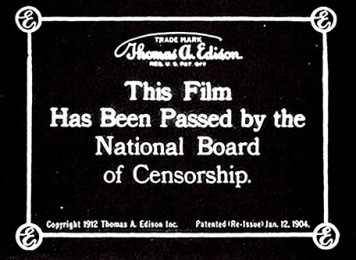 Big Content has pressured the Chilling Effects DMCA archive to censor itself, just as the world is starting to see those who stand up to censorship as heros.
Big Content has pressured the Chilling Effects DMCA archive to censor itself, just as the world is starting to see those who stand up to censorship as heros.
The organisation decided to wipe its presence from all popular search engines to prevent it being sued by copyright holders.
Chilling Effects was an archive of all sites which had been shut down with a DMCA court order. For years it was quietly showing how free speech was being threatened by take-down orders.
Google now processes more than a million takedown requests from copyright holders, and that’s for its search engine alone.
Google partners with Chilling Effects to post redacted copies of all notices online seeing it as one of the few tools that helps to keep copyright holders accountable. It shows inaccurate takedown notices and other dirty deeds by the content industry.
Founded by Harvard’s Berkman Center, it offers an invaluable database for researchers and the public in general.
Chilling Effects removed its entire domain from all search engines, including its homepage and other informational and educational resources and it looked like Big Content is behind it.
Its pages contain hundreds of millions of non-linked URLs to infringing material. Copyright holders are not happy with these pages. Copyright Alliance CEO Sandra Aistars described the activities of the Chilling Effects projects as “repugnant”.
Berkman Center project coordinator Adam Holland told TorrentFreak, Chilling Effects has now decided to hide its content from search engines, making it harder to find.
The self censorship may sound strange coming from an organisation that was founded to offer more transparency, but the Chilling Effects team believes that it strikes the right balance, for now.
“It may or may not prove to be permanent, but for now it’s the step that makes the most sense as we continue to think things through,” he added.
The notices themselves remain online, but with just the site’s own search it’s harder to find cases of abuse. The copyright holders on the other hand will be happy.
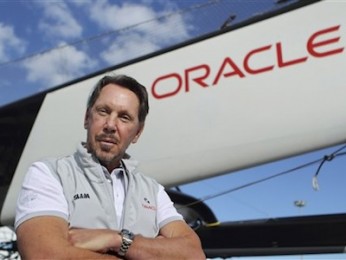 The appointment of Safra Catz and Mark Hurd as co-CEOs at Oracle made considerable sense to Wall Street, but sources in the database firm were surprised that Thomas Kurian did not come out of it as well as they expected.
The appointment of Safra Catz and Mark Hurd as co-CEOs at Oracle made considerable sense to Wall Street, but sources in the database firm were surprised that Thomas Kurian did not come out of it as well as they expected.
This indicates that Chairman Larry Ellision is up to something.
Kurian was appointed president of software development, but that seems to underplay his importance at Oracle.
Reuters points out that Ellison often turns to Kurian for a second opinion and affirmation on product decisions and conversations.
A former executive told Reuters that Ellison always looks back at Thomas and asks him what he thinks.
This has led many to believe that Kurian, not Herd or Catz will end up replacing Ellison when the 70 year old retires.
After Hurd and Catz were promoted, top executives worried about keeping Kurian motivated and happy. He continued to report directly to Ellison, now executive chairman of the board, along with Hurd, Catz and two others.
Ellison seems to be in no hurry to leave and was appointed Oracle’s chief technology officer in September, but he has in recent years spent an increasing amount of time on other interests, including his sailing team, and as he develops the Hawaiian island he largely controls into an eco-tourism destination.
When Ellison does eventually hand over the reins, he will want to entrust Oracle to someone who lives and breathes technology, and Kurian is seen fitting that job description best among the top executives.
However outside Oracle Kurian is an unknown. He is seen as a technologist who understands Oracle’s products inside out, works long hours, executes Ellison’s vision and is pants at small talk.
He is the man behind Oracle’s middleware business developing into a substantial enterprise and Oracle’s vast and still rapidly evolving suite of products, from business software applications to servers and databases.
Ellison has put him in charge of the company’s move to the cloud and if he manages it, it will be difficult for his detractors to deny him the top spot.
What stands against him is his tendency not to delegate and he likes to get involved in a minutia.
However the same applies to Ellison, and it would appear that he has plans for Kurian, which should worry the Herd of Katz he has placed as joint CEOs.
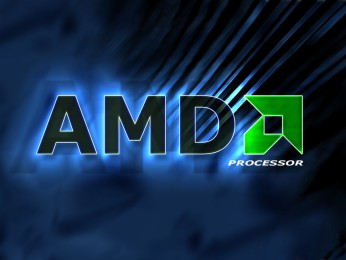 While Intel is pinning its future on the Internet of Things (IoT), AMD appears to be spurning it as if it were a rabid dog.
While Intel is pinning its future on the Internet of Things (IoT), AMD appears to be spurning it as if it were a rabid dog.
Its senior vice president and general manager of the computing and graphics business group John Byrne thinks that it is much wiser to keep pushing into the PC market, which is still a $40-billion-a-year opportunity.
Talking to Venture Beat he said that AMD has to execute on its upcoming Carrizo family of accelerated processing units (APUs), which will be focused on the mobile computing market. About 300 million PC processors and 90 million graphics chips are sold each year, and Byrne wants AMD to get its fair share of those sales.
Byrne thinks that setting up a chip making operation for the Internet of Things is just an invitation to lose money.
Byrne said while it concentrated on the IoT, Intel it was missing opportunities in the classic PC market.
“There’s still 300 million PCs, still 90 million graphics chips. If I look at Intel, Nvidia, and my revenue, that’s still a $40 billion market — even before you get to the IoT. If you look at the gross margin profile of that business, it’s still significantly more than AMD as a company’s average. There’s still significant market opportunities in the classic PC space,” Byrne said.
He said that AMD still had work to do in the PC chip market. It had to work on its x86 performance, ensuring that each product it bought to market is better x86. There needed to be improvements in graphics, notebooks needed to improve battery life.
Byrne said that it all meant that AMD could push into the commercial market a long more. He pointed out that AMD won the industry’s largest single tender in commercial 18 months ago in India and Elitebook with HP last year.
“Wait until you see the lineup of commercial platforms I have with Carrizo. It allows us to continue to attack that i3, attack that i5 consumer, and really get to penetrate the commercial market space. We’ll attack graphics. That’s going to be my strategy next, he said.
While he said that the Internet of Things is important there are two ways to make cash from it. Intel is concentrating on the silicon inside the wearable. However, that will cost under $10 and not make huge amounts of cash.
“You’re seeing that with Quark and some of the other investments our competitors are making. I’m not in business to lose money. Share and revenue is nice but so is profitability,” he said.
But all of those devices have to be connected and it is those higher end devices that AMD will be targeting.
 While Amazon is known to many for delivering CDs, books and foot spas, not many are aware that it has grabbed a sizeable chunk of the enterprise market too.
While Amazon is known to many for delivering CDs, books and foot spas, not many are aware that it has grabbed a sizeable chunk of the enterprise market too.
 In a bid to outdo Google’s YouTube, Facebook said yesterday it had bought San Diego company QuickFire.
In a bid to outdo Google’s YouTube, Facebook said yesterday it had bought San Diego company QuickFire.
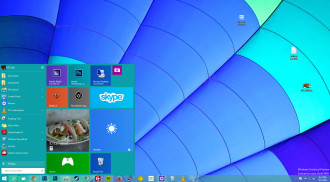 The arrival of Windows 10 and the introduction of 14 nanometre microprocessors are unlikely to stimulate much demand for PCs in 2015.
The arrival of Windows 10 and the introduction of 14 nanometre microprocessors are unlikely to stimulate much demand for PCs in 2015.
 A report said that integrated infrastructure and platforms – that is to say vendor systems containing servers, disk storage, networking kit and systems management software – grew by 38 percent in the third quarter of last year.
A report said that integrated infrastructure and platforms – that is to say vendor systems containing servers, disk storage, networking kit and systems management software – grew by 38 percent in the third quarter of last year.
 A group of researchers at York University is looking at what online avatars reveal about the personality of the people who choose them.
A group of researchers at York University is looking at what online avatars reveal about the personality of the people who choose them.
 A true virtual reality machine is a lot longer away than many believe, warns AMD.
A true virtual reality machine is a lot longer away than many believe, warns AMD.
AMD’s chief gaming scientist Richard Huddy said that getting photorealism in games is impossible in the current virtual reality hardware.
Talking to Develop, Huddy said that virtual reality was a staggeringly exciting field.
“But hardware companies need to produce something 100 or 200 times more powerful than current hardware if we’re going to get to the stage where we have complete photorealism in virtual reality headsets. It starts with the facts that, for a person with 20:20 vision, they will need a screen with a resolution of about 8k-by-6k to enjoy photorealism.”
This sort of statement flies in the face of many of the claims of the tech press who have been looking at the current generations of virtual headset.
Huddy predicts about 35 million pixels per eye should suffice for VR photorealism. That’s still 75 million pixels, taking us to a 35-fold increase compared to a standard 1080p monitor.
To get an indication about how far you have to go to get close to that Huddy you will need to get a 400x-to-1000x increase in horsepower to engender true, convincing VR photorealism that is indistinguishable from the real world.
 Lawyers from Apple are celebrating after they managed to convince a judge to throw out a case which accused it of defrauding consumers by selling MacBook laptop computers that contained “logic boards” it knew were defective, and which routinely failed within two years.
Lawyers from Apple are celebrating after they managed to convince a judge to throw out a case which accused it of defrauding consumers by selling MacBook laptop computers that contained “logic boards” it knew were defective, and which routinely failed within two years.
US District Judge William Alsup in San Francisco said the plaintiffs, Uriel Marcus and Benedict Verceles, failed to show that Apple made “affirmative misrepresentations,” despite citing online complaints and Apple marketing statements calling the laptops “state of the art” or the “most advanced” on the market.
“Plaintiffs have failed to allege that Apple’s logic boards were unfit for their ordinary purposes or lacked a minimal level of quality,” Alsup wrote. “Both plaintiffs were able to adequately use their computers for approximately 18 months and two years, respectively.”
However, Alsup did not chuck out the case completely. He gave the plaintiffs until January 22 to amend their lawsuit, which sought class-action status. It is not clear how they are going to proceed next.
The plaintiffs claimed that Apple’s sale of MacBooks since May 20, 2010, violated consumer protection laws in California and Texas, where the lawsuit began last May before being moved.
Apple Chief Executive Tim Cook was told about the defective logic boards in 2011, but did nothing.
A separate and still pending lawsuit in California accuses Apple of defrauding consumers by selling MacBook Pro laptops in 2011 that contained defective graphic cards, causing screen distortions and system failures. Still you get what you pay for.
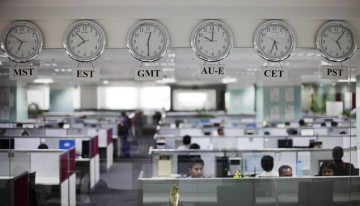 Indian outsourcers Infosys have business results which were much better than the cocaine nose jobs of Wall Street predicted.
Indian outsourcers Infosys have business results which were much better than the cocaine nose jobs of Wall Street predicted.
Infosys posted a 13 percent rise in quarterly net profit, as it won more outsourcing contracts from Western clients than many thought possible.
Infosys, which provides IT services to clients including Apple, Wal-mart, and Volkswagen, said profit in the quarter ended December 31 rose to $520.9 million. Analysts, on average, were expecting a profit of $498.8 million.
It has been a tough year for Infosys. It has lost ground to competition and staff have been leaving the building so fast they have had to keep the doors open all the time.
The company has been boosting growth by focusing on high-margin services including artificial intelligence and automation.
The company won 59 new clients in the December quarter, it said in a statement.